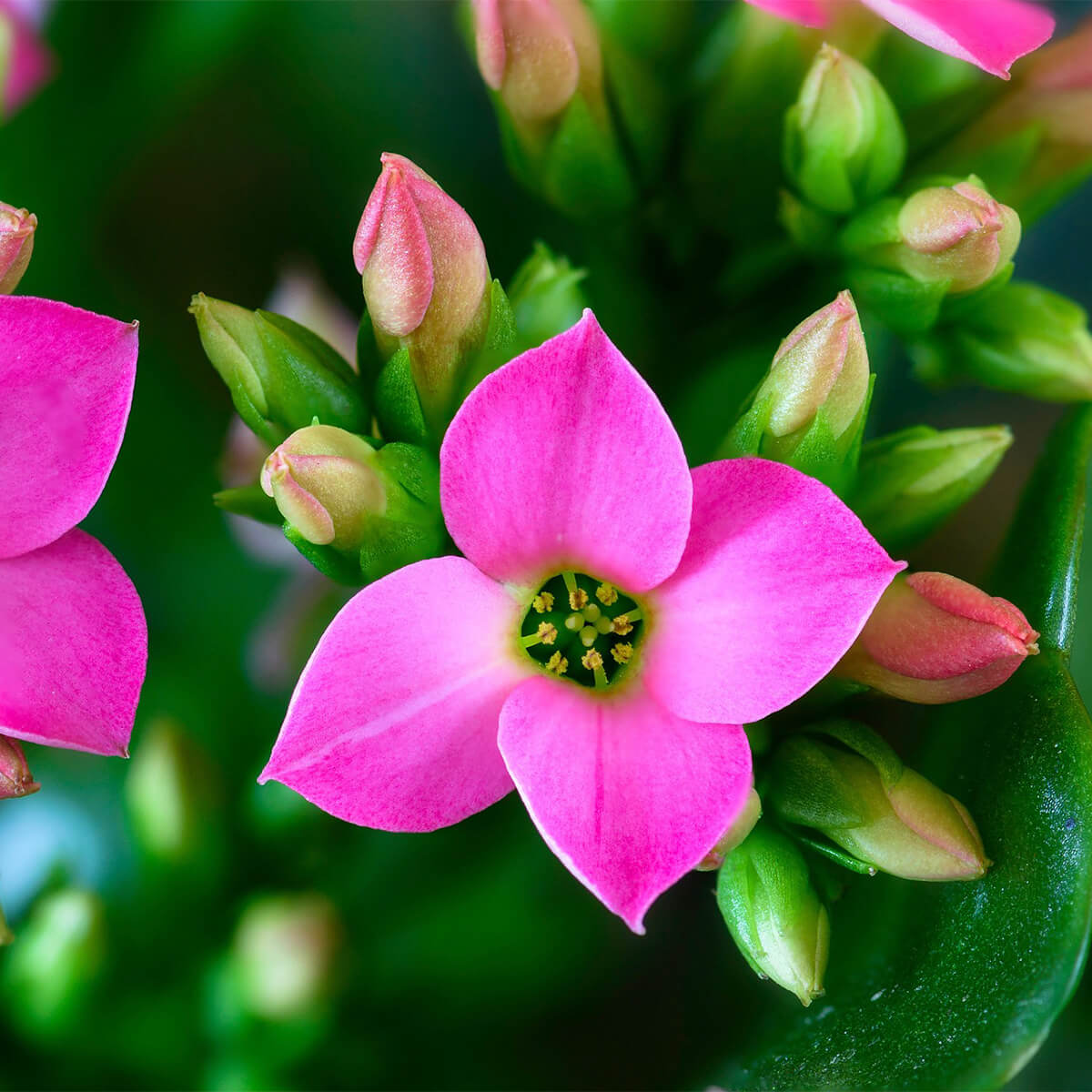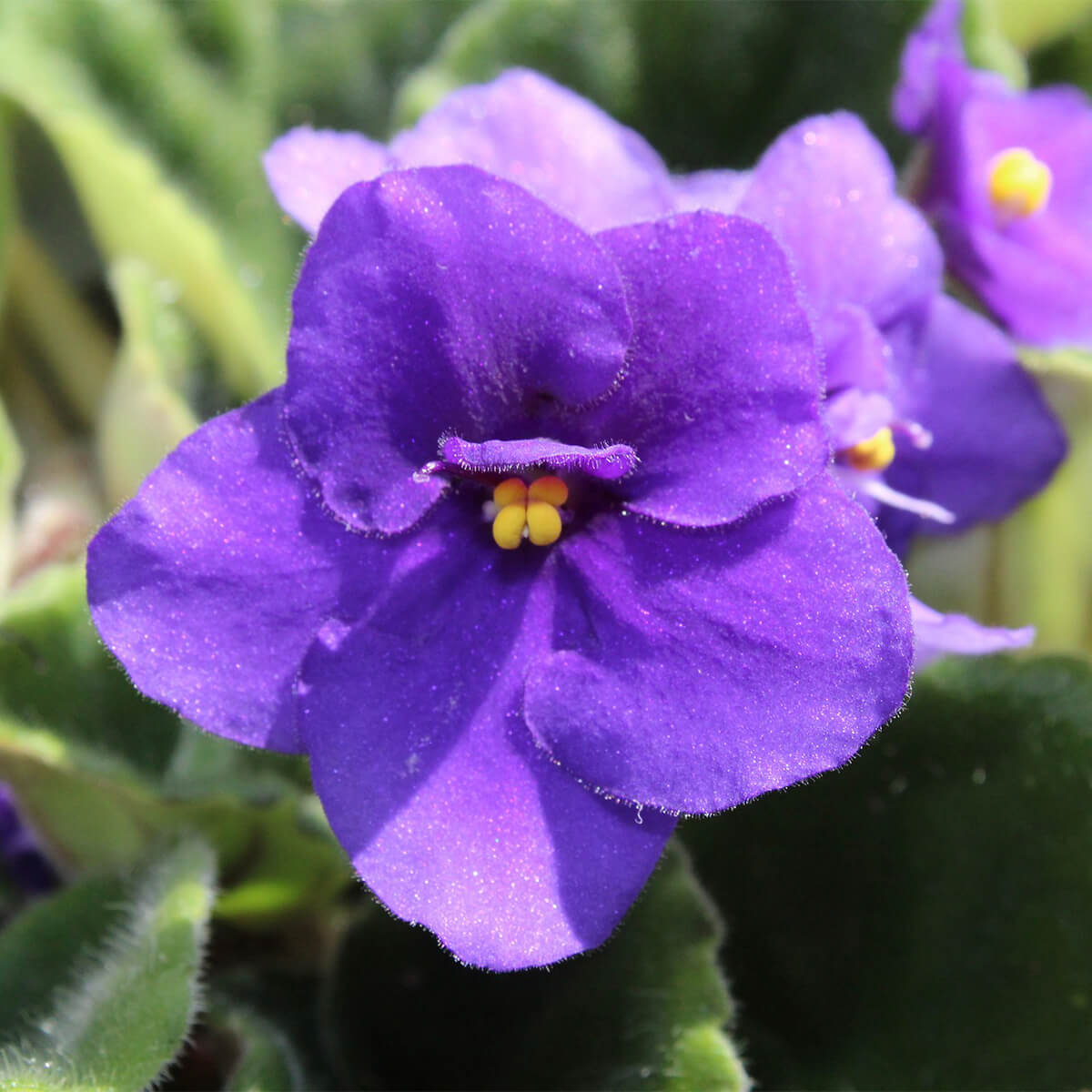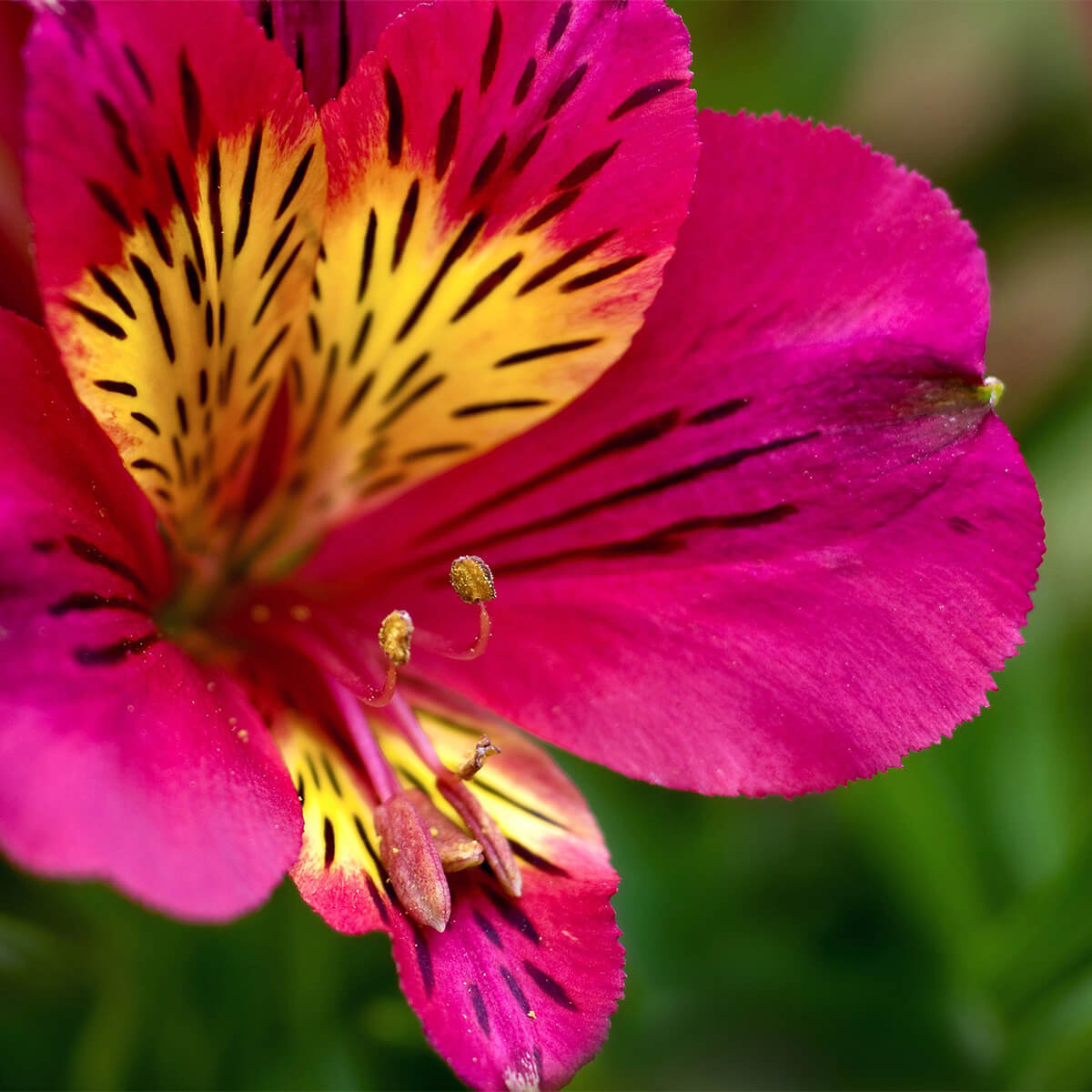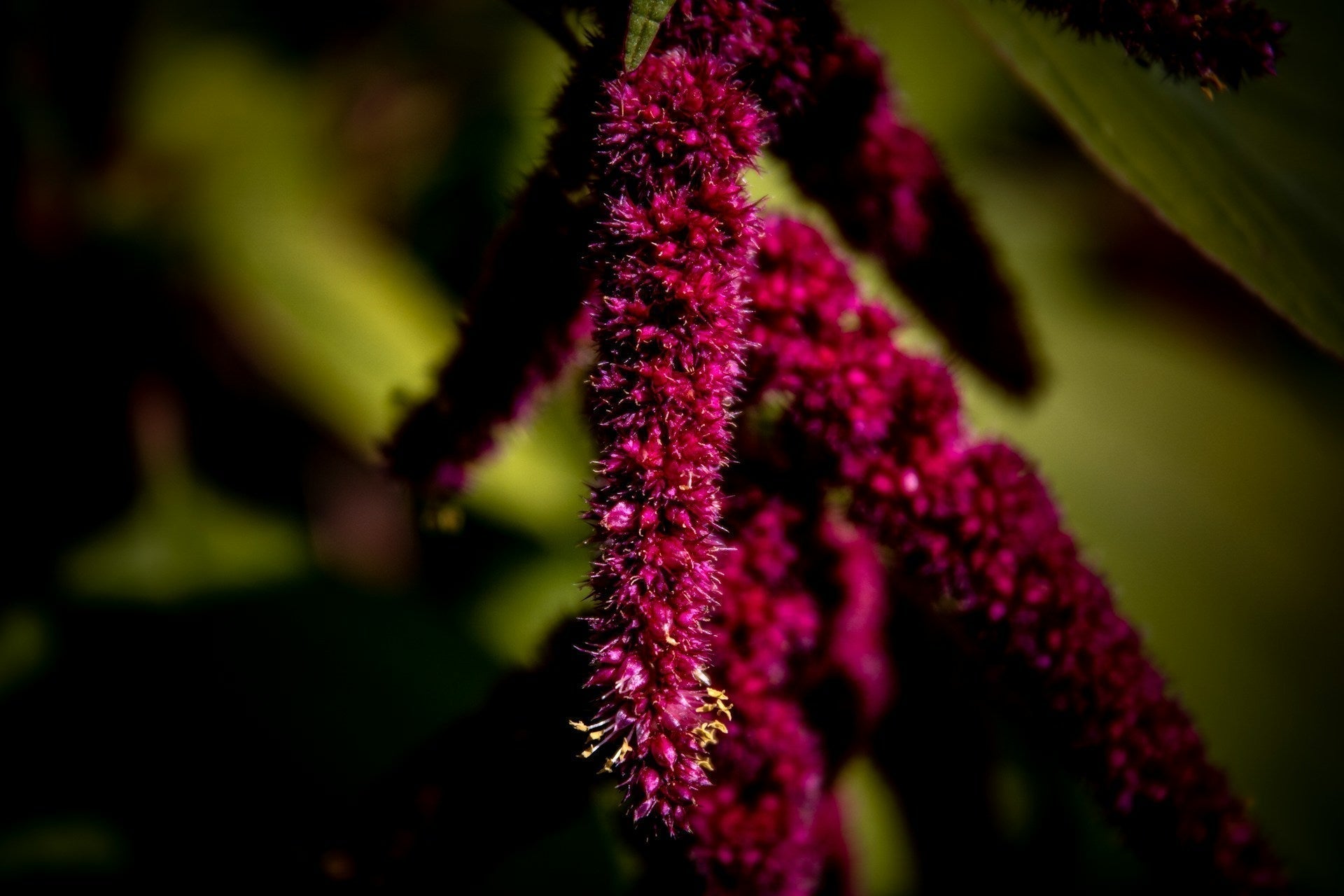Kalanchoe – Kalanchoe blossfeldiana
Symbolism: The kalanchoe (a.k.a. calandiva) is a flowering succulent that symbolizes persistence and eternal love, due its long-lasting blooms.
Description: The kalanchoe is a bushy plant featuring large, dark green leaves with scalloped edges that are waxy or hairy in texture. The tubular-shaped flowers come in various colours and usually have four petals. Although not typically fragrant, these dainty blooms contain high levels of cardiac glycosides, which are toxic to animals when consumed.
Named after: The name Kalanchoe is derived from the Chinese word kalan chau, meaning "that which falls and grows," referring to the plantlets that drop from the stems of many species, highlighting the plant's asexual reproductive traits.
Latin/Scientific name: Kalanchoe blossfeldiana
Native to: Madagascar
Flowering period: The bloom cycle of Kalanchoe is triggered by long stretches of nighttime darkness in winter. Starting in spring, the plant produces colourful flowers that can last several weeks and recur throughout most of the year, as long as light exposure is controlled.
Vase life: Not applicable
Popular use in floral arrangements or bouquets: N/A
When in stock in our shops: We often carry potted kalanchoe through out the year as part of our indoor flowering plant collection.
Potted plant care
Light
- Place your potted Kalanchoe plant in a location that receives bright, direct sunlight for at least 4-6 hours a day.
- They can tolerate some shade, but too little light will result in fewer flowers.
Soil
- Use a well-draining potting mix that contains sand or perlite to ensure proper drainage.
- Kalanchoe plants prefer slightly acidic to neutral soil with a pH between 6.0 and 7.0.
Water
-
Water your Kalanchoe plant when the top inch of soil feels dry to the touch.
-
Water the plant thoroughly and allow excess water to drain out of the pot.
-
Avoid overwatering as it can cause root rot.
Temperature & Humidity
-
Kalanchoe plants prefer warm temperatures (60-85°F, 16-29°C).
-
They can tolerate dry indoor air, but prefer a humid environment.
-
Placing a tray of water near the plant or using a humidifier can help maintain adequate humidity levels.
Feeding
-
Fertilize your Kalanchoe plant every 2-4 weeks with a balanced, water-soluble fertilizer during the growing season (spring and summer).
-
Avoid fertilizing during the winter months when the plant is dormant.
Transitioning Indoors to Outdoors
-
Kalanchoe plants are typically grown outdoors in warm climates, but they can also be grown in containers indoors.
-
If you decide to transition your Kalanchoe plant from indoors to outdoors, do so gradually to avoid shock.
-
Start by placing the plant in a shaded outdoor area for a few hours a day and gradually increase the exposure to sunlight over time.
-
Ensure the outdoor soil is well-draining to prevent waterlogged conditions.







